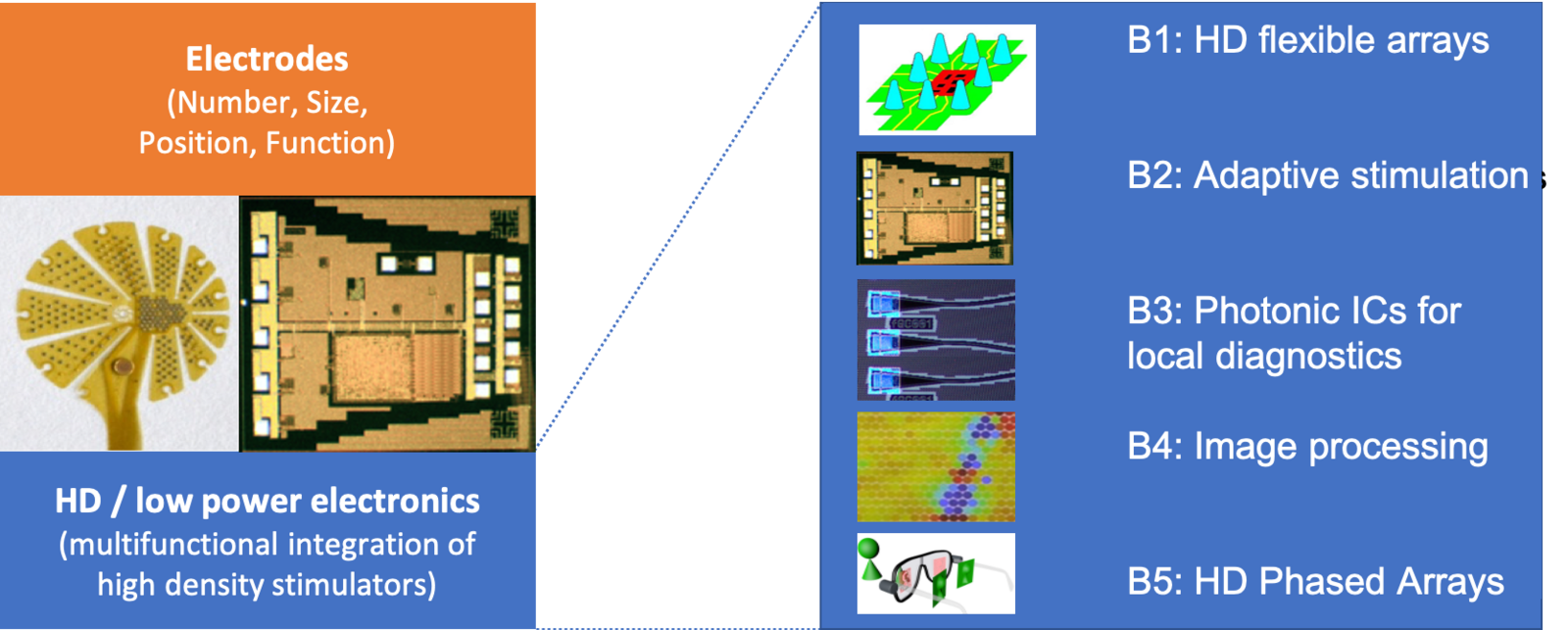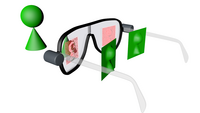Working area B: System Components for Retinal Implants

Planned PhD Projects within Working Area B:
B1: Flexible epiretinal implant with high stimulation/recording electrode count and integrated electronics (Mokwa, Ingebrandt)
This project is a continuation of a formerly successful epiretinal implant concept using thinned CMOS arrays with integrated photodiodes and stimulation electronics on one chip. In these next generation epiretinal implants, back-side illumination is used and stimulator chips are encapsulated in multilayer polymeric, flexible systems while using IrOx and 2D material compounds as stimulation and cell-contacting material. The aim is to realize stand-alone systems-in-a-foil with multiple functionalities, high electrode count and small pitch.

B2: High-Density adaptive Stimulation for Retina Implants (Kokozinski, Seidl)
Current available retina implants only perform an open-loop-stimulation, i.e. the affected region is stimulated non-adaptively on the basis of preset stimulation parameters. In order to make the electrical stimulation as effective and power saving as possible, the retina’s network response has to be considered. To this end, we want to investigate new two-dimensional configurable local feedback structure concepts for high-electrode density designs. The ASIC design should be done in scalable and transferable structures smaller than 0.35 μm.

B3: Novel integrated photonic IC solution for testing of pharmacological treatment of retina samples with sub-cellular spatial resolution using Opto-/Electroretinography-method (Merget, Johnen)
In this project, we propose the investigation of an advanced optically supported electroretinogram characterization scheme with a sub-cellular spatial resolution. This is achieved by a dense matrix of specially designed optical emitters implemented in an integrated photonic chip (PIC) technology. The primary focus of the project is the design and implementation of said optical PIC frontend. In a later stage, the system will be used for characterizing samples of degenerated retinae.

B4: Image Processing, Adaptive Filters, Feed Back Loops, Learning (Merhof, Walter)
An increased number of electrodes has the potential to provide improved visual performance. However, appropriate image processing is required in order to optimally use these electrodes to convey visual input. The goals of the project „Image Processing, Adaptive Filters, Feed Back Loops, Learning“ are therefore to establish optimized low-resolution representations of input images using image processing and to perform multi-sensor fusion for integrated processing of additional stereo and infrared images. Furthermore, modeling of retinal connectome data and simulation of micro saccades will be performed to gain insight into appropriate modes of stimulation.

B5: Novel Retina Implant using Phased Array Emitters and a Dense Photodiode Array(Witzens, Merget)
Phased arrays allow the generation of arbitrary light patterns and can be implemented as a photonic integrated circuit. We will develop an implantable artificial retina with a photodetector array receiving optical signals from a phased array integrated in a wearable goggle, with the long-term goal of restoring vision to patients suffering from macular degeneration or other vision impairments.

